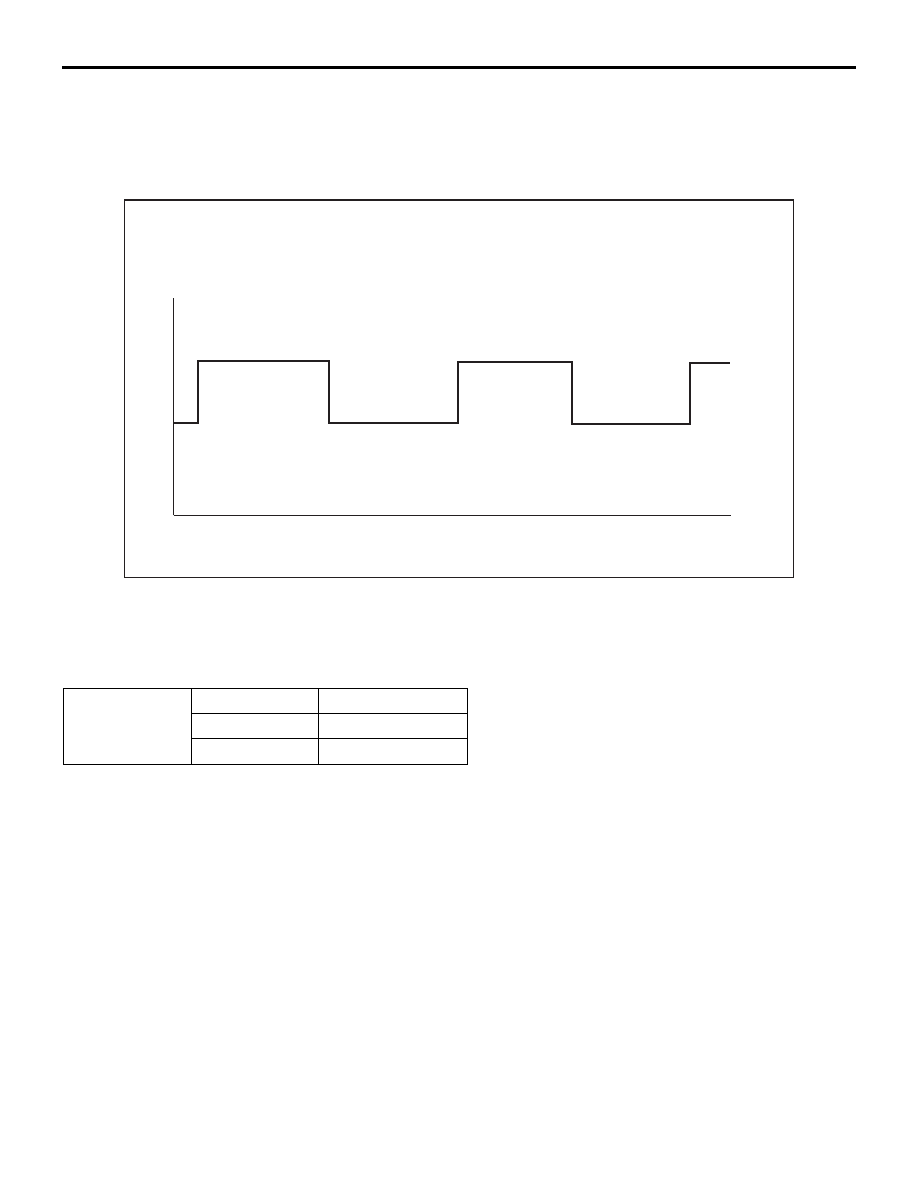Mitsubishi 380. Manual - part 966

ON-VEHICLE SERVICE
ANTI-LOCK BRAKING SYSTEM (ABS)
35B-89
6. Turn wheel by hand at approximately 1 revolution per
second (r/sec) or drive on brake dynamometer at 5km/h.
Recommended Oscilloscope setting:
• Y-axis: 2Volts
• X-axis: 100ms
NOTE: If the oscilloscope signal shape is correct and wheel
sensor air gap is within specification, but the voltage values are
either higher or lower as shown in the table below, the wheel
speed sensor must be changed.
Probable causes of low output voltage
• Wheel speed sensor pole piece to wheel speed rotor clear-
ance too large
• Faulty wheel speed sensor
7. To observe the waveform with an oscilloscope:
• Front and Rear Wheels: Turn the wheels manually at a con-
stant speed
NOTE: The output voltage will remain same regardless of
vehicle speed.
.
NOTE: The wheel speed sensor cable moves in relation to motion of the front or rear suspension. Therefore,
it is likely that it has an open circuit only when driving on rough roads but it functions normally when driving on
smooth roads. It is recommended to observe sensor signal waveform also under special conditions, such as
driving on a rough road.
1.50
1.00
0.50
0.00
U-CH1
0
20
40
60
80
100
ms
V
Test Procedure: Universal Oscilloscope
FIGURE 3
35DB120A
Wheel speed
sensor
Standard
Value
High
0.9V - 1.5V
Low
0.3V - 0.8V